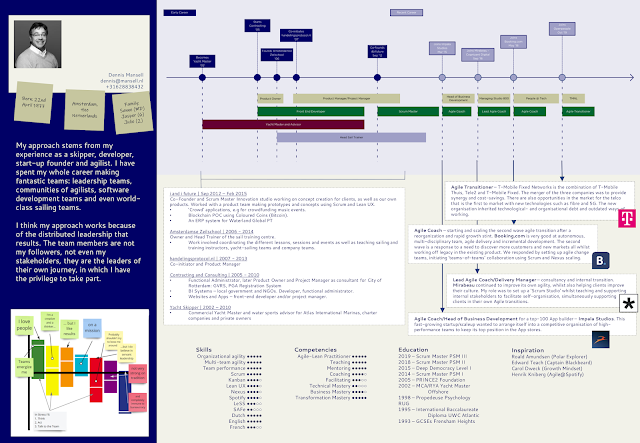Can you handle an Agile view of Human Nature? - Motivation
 Implicit in Agile methods, is a certain image of human nature. This view of human nature is prescriptive, you have to 'buy in' to this view or else somewhere along the line you will end up in conflict with yourself or with the particular agile method you are attempting. This is a real problem if you have entrenched beliefs about how people are motivated and work, less so if you are still flexible enough to let yourself be surprised.
Implicit in Agile methods, is a certain image of human nature. This view of human nature is prescriptive, you have to 'buy in' to this view or else somewhere along the line you will end up in conflict with yourself or with the particular agile method you are attempting. This is a real problem if you have entrenched beliefs about how people are motivated and work, less so if you are still flexible enough to let yourself be surprised.These are the assumptions:
- People are intrinsically motivated,
- can and want to decide for themselves,
- wish to work in interaction with others,
- want to make things that work,
- need a 'sustainable' workpace and
- can be critical of themselves.
Intrinsic vs Extrinsic motivation
In Agile implementations, this is the most troublesome of the assumptions to face head on. Most managers see their underlings as parts of a powered machine like a bike or a car. The machine needs continuous effort to keep it going, it will not work by itself, at least not for very long.
Extrinsic
|
Intrinsic
|
This is often coupled with a self serving bias.
Most managers got promoted into their positions and a pleasant explanation of their status is that it was due to their own hard work, insight etc. that they now manage people who are 'just' developers. That their underlings were not promoted must therefore be due to something and a lack of internal drive is a convenient explanation.
But - saying that all people are completely autonomous self-starters would also be naïve. Just because 'Agile' wants us to treat our teams as intrinsically motivated does not mean it is true. However, the catch 22 is that the only way to achieve self-motivation in your teams is to empower them. Believe me, I have seen this go spectacularly wrong, complete with crying children, burning equipment and rescue services (not at my office job thankfully). Nonetheless, the trick is to give away as much responsibility away as early as possible.
To get trustworthiness, you must also give trust. The expectation of self-motivation, when given to the right team in an atmosphere of mutual respect and trust, is in itself enough to foster self-motivation, sometimes even to the surprise of some of your team members! Conversely; using external motivation, having a lack of trust and respect or defective team members will all lead to dysfunction and the need for carrots and sticks. And it does happen, there are defective people with (thankfully rare) personality disorders that mean that they will never be self-motivated. But if you need to push and pull your team into action, make doubly sure that you are not causing the behaviour yourself.
But - saying that all people are completely autonomous self-starters would also be naïve. Just because 'Agile' wants us to treat our teams as intrinsically motivated does not mean it is true. However, the catch 22 is that the only way to achieve self-motivation in your teams is to empower them. Believe me, I have seen this go spectacularly wrong, complete with crying children, burning equipment and rescue services (not at my office job thankfully). Nonetheless, the trick is to give away as much responsibility away as early as possible.
To get trustworthiness, you must also give trust. The expectation of self-motivation, when given to the right team in an atmosphere of mutual respect and trust, is in itself enough to foster self-motivation, sometimes even to the surprise of some of your team members! Conversely; using external motivation, having a lack of trust and respect or defective team members will all lead to dysfunction and the need for carrots and sticks. And it does happen, there are defective people with (thankfully rare) personality disorders that mean that they will never be self-motivated. But if you need to push and pull your team into action, make doubly sure that you are not causing the behaviour yourself.



Comments
Post a Comment